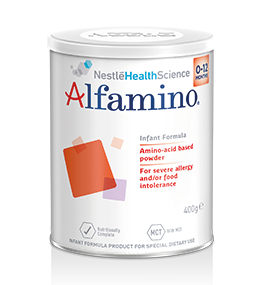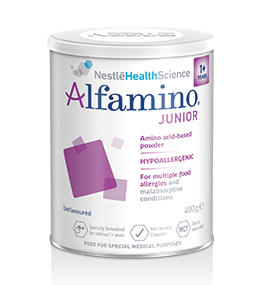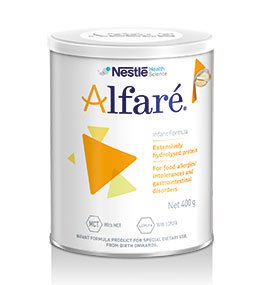Eczema? Reflux? Constipation? Diarrhoea? Crying? Do you suspect that your patient has a food allergy?
Cow's Milk Protein Allergy is one of the most common food allergies in the first year of life.
Food allergies and non-allergic food hypersensitivities in babies and young children can present a real challenge. Until a diagnosis is reached, the process for parents, children and healthcare professionals can be a long and stressful one.
Non-allergic food hypersensitivities, such as intolerances, arise because the body is unable to digest or reacts to certain naturally occurring component of foods, i.e., lactose or fructose, or, less commonly, food coloring, additives or preservatives. Non-allergic food hypersensitivities do not involve the immune system and are much more common than food allergies.
Food allergies arise due to the body’s immune system reacting to certain, normally harmless, allergy-triggering substances (allergens) in food. These allergens are almost always proteins. Proteins are one of the essential nutrients that make up the body, together with vitamins, minerals, carbohydrates and fat. Other components in food, such as lactose and sugar, do not act as allergens.
Certain allergens cause more reactions than others. Here are the top eight allergens accounting for approximately 90 percent of all allergic reactions to food in children: Egg, Milk, Fish, Wheat, Shellfish, Tree nut, Peanut, Soy.
The prevalence of food allergies, especially in the first years of life, has increased dramatically in the last 10 years or so. The challenge to find better ways to prevent and manage food allergies is a pressing one.




